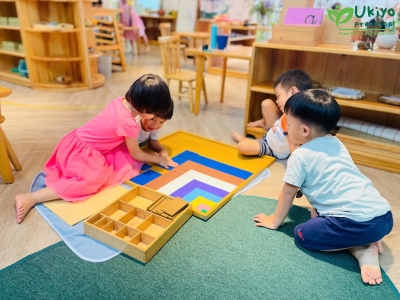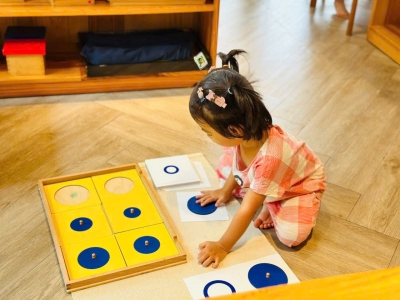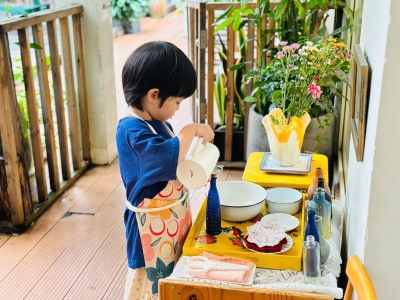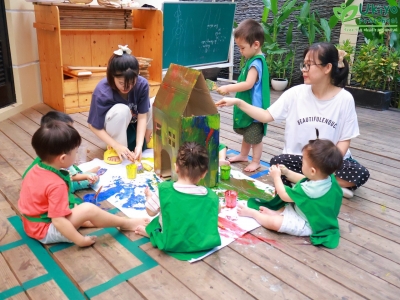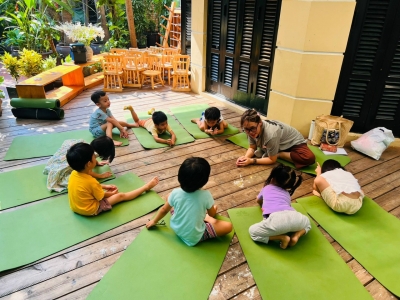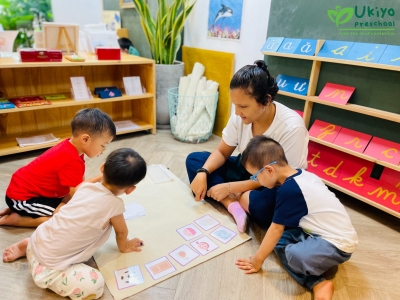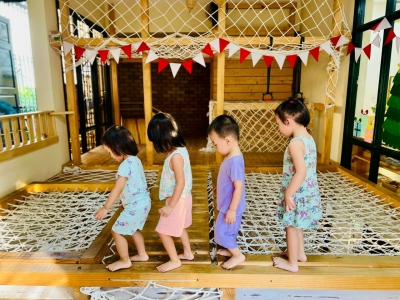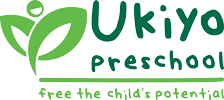BITING
Some things to remember:
Avoid calling or thinking of the child as a “biter” and ask others not to use this term. Labeling children can lead to them taking on the identity assigned to them, which can intensify biting behavior rather than eliminate it.
Children bite to cope with a challenge or fulfill a need. For example, the child may be biting to express a strong feeling (like frustration), communicate a need for personal space (maybe another child is standing too close), or satisfy a need for oral stimulation. Trying your best to understand the underlying cause of the biting will help you develop an effective response. This makes it more likely that you will be successful in eliminating the behavior.
Why do toddlers bite?
Toddlers might bite if they:
- Lack language skills necessary for expressing important needs or strong feelings like anger, frustration, joy, etc. Biting is a substitute for the messages they are not yet able to express in words like: “I am so mad at you,” “You are standing too close to me,” “I am excited,” or “I want to play with you.”
Strategies to Prevent Biting
If you know a child has bitten and could bite again, you need to observe them. All educators can take turns to observe and be ready to step in when needed.
If you see that the child might be on the verge of biting, you can:
- Distract the child with an activity or book. Suggest a walk outside. The goal is to reduce the tension and shift the child’s attention.
- Support the child by role-modeling the language they could use when you know it is a situation that triggers the need to bite. For example: “Marcus, you can tell Ana: ‘You are too close to me. I don’t like it when you touch my hair.”
- If you think the child might be biting due to a need for oral stimulation, offer the child something they can safely bite and chew—a cracker, some carrot sticks, or a teether.
What Do I Do When My Toddler Bites?
- Firstly, keep your own feelings in check. When a toddler bites, you might feel frustrated, infuriated, annoyed, embarrassed, and/or worried. All these feelings are normal but responding when you are in an intense emotional state is not a good idea. So, calm yourself before you respond—take a deep breath, or do whatever works for you.
- In a firm, matter-of-fact voice (but not angry or yelling), say: “We do not bite. Biting hurts.” Comment on how the other child is feeling: “Look, Madison is crying. She is crying because you bit her. Biting hurts.” Keep it short, simple, and clear.
- Next, shift your attention to the child who was bitten. When a child bites, adults often pay a lot of attention to the child who bit. This is usually negative attention, but it is still very reinforcing and can cause the biting behavior to continue, rather than stop. When you shift your focus and energy to the bitten child, you clearly communicate that biting does not result in more attention. Showing concern and sympathy for the child who was bitten also teaches empathy.
Help the Child Soothe the Bitten Child
- Get the child to soothe the bitten child. Ask the child to get an ice pack. They can walk with you to the fridge to get it and place it on the bite. They could get a tissue or a drink of water. Once the child is calm……
- Help the children move on. Ask: “What activity would you like to do now?” It might help to offer a choice between 2 activities, like clay, drawing, painting, or playing in sand or water, that will allow them to release energy in constructive ways and can help them relax.
Help Your Child Cope with Feeling Overwhelmed
If the child is easily overwhelmed, you can:
- Give the child a firm “bear” hug when you sense they are feeling stressed and out of control and perhaps about to bite. This can help children feel “held together,” which can be very soothing.
- Create a “cozy corner” in the classroom with pillows. Explain that this is a place the child can go if they want to be alone or feel out of control and need to cool down. You could use a bed/mat for them to go. Other children need to know that if a child is on the mat, it means they want to sit there alone.
Provide Opportunities for Active Play
If the child needs more active play, you can:
-
- Set aside time each day to be active. Sometimes they need to go for a run!
- Talk with the child’s other caregivers to ensure that active play is a part of their daily routine. Toddlers who bite should not be punished by losing “outside” time. This may make the problem worse.
- Build activity into the child’s daily routines—for example, jumping up and down before lunch or before rest time.
Address Sleep Challenges
Check with parents if the child is over-tired and gets adequate sleep.
Support Healthy Teething
If the child is teething, you can: Offer them a teether or cold washcloth to bite or teething toys that are appropriate.
Provide Oral Stimulation
If the child has a need for oral stimulation: Offer them crunchy (healthy) snacks at regular intervals across the day. Research has found that this intervention can reduce biting incidents.
Others



